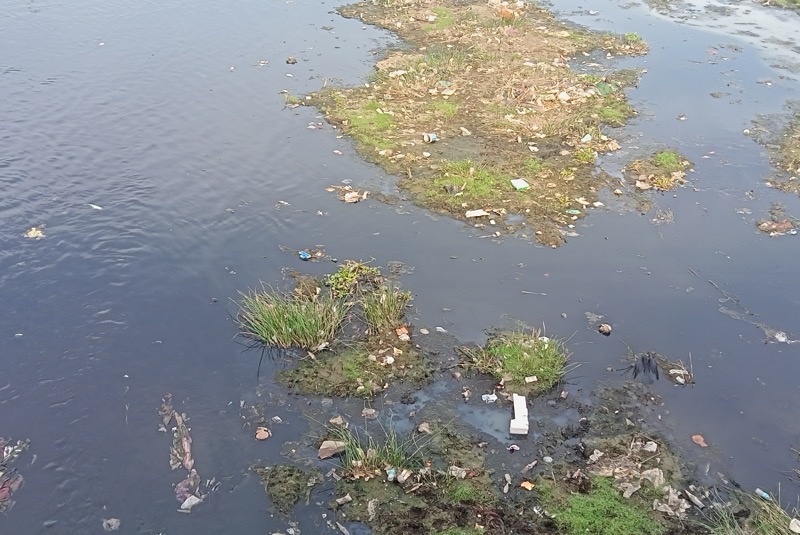A year ago, scientists at the University of British Columbia (UBC) developed a silica-based material that can absorb a broader range of harmful ‘forever chemicals.’ Per and poly-fluoroalkyl substances (PFAS) are commonly referred to as ‘forever chemicals’ because they are made of chemical bonds which do not break down easily. Hence, they stay in the environment for prolonged periods and become contaminants.
So far, carbon filters have been used to concentrate and dump these substances. However, researchers are now attempting to use this new silica-based material to absorb more PFAs and break their carbon-fluorine bond using electrochemical or photochemical processes.
PFAS are water, heat, and oil resistant. Hence, they are commonly found in cosmetic products, water-resistant clothing, and household cooking appliances. They are present in the water-proof mascara and lipstick we put on our faces, the non-stock pans we use to cook our food, and the stain-resistant coating we put on our furniture.
In addition to contaminating the environment, PFAS also pose health hazards. PFOA is a PFAS that has been associated with kidney and testicular cancer, thyroid disease, ulcerative colitis, high cholesterol, and pregnancy-induced hypertension. PFOS, another type of PFAS, has been associated with reproductive, developmental, liver, kidney, and thyroid disease. It is, thus, quite shocking that these substances have only recently been regulated. What’s more, they remain unregulated in some countries, like India.
In 2019, the International Pollutants Elimination Network (IPEN) released a report on India’s PFAS situation. It stated that India is a member of the Stockholm Convention of 2006, which added PFOs to its global restrictions list in 2009. However, India has not accepted this amendment, so PFAS are unregulated in India.
This is highly concerning as the IPEN report found that PFAS contaminates Indian rivers, groundwater, and drinking water. It even found traces of PFAS contamination in the breast milk of women from Chidambaram, Kolkata, and Chennai.
In contrast, the Environment Protection Agency in the USA recently put limits on PFAS in drinking water. In the UK, PFOS and PFOA, two of the most harmful PFAS, are regulated. In Europe, there is a proposal to regulate PFAS as a single group instead of handling each substance separately.
The West is not free from PFAS contamination. However, regulations mean that while scientists and researchers figure out how to tackle the PFAS already present in the environment, they do not have to worry about adding more.
Moreover, the media has not thoroughly covered the PFAS menace. The IPEN report only found two mentions of PFAS in the press. One article summarised a study on PFOA, and the other discusses the long-term exposure to PFAS due to using non-stick cookware.
It is alarming that this topic has not prompted interest in the media. It involves environmental pollution, disease, scientific experts, and the lack of government action. Nonetheless, most Indian reporting has focused on highlighting the developments with PFAS in the West, completely ignoring the harm they are causing back home.
The problem of PFAS contamination is an environmental hazard, but it is also a health hazard. Hence, while breaking down the PFAS that already contaminates the environment is essential, ensuring these chemicals do not lead to further contamination is equally crucial. While regulation is the best method to achieve this, it is not foolproof.
Since PFAS are most commonly found in everyday items, consumer pressure is the key to reducing their presence. This is precisely why the absence of PFAS from popular discourse in India is concerning.
Regulating PFAS is likely to attract backlash from manufacturers who use them. Regarding the breakthrough by the scientists at UBC, Madjid Mohseni, a researcher involved in the study, said:
One way to fix [the problem of PFAS] is to do what we’ve done…[t]he other way to fix this, and this would be exciting, is for industry not to use the chemicals any more.
India is miles away from feeling this level of excitement. Without regulations, the hope for manufacturers to go PFAS-neutral is as good as a dream.
-30-
Copyright©Madras Courier, All Rights Reserved. You may share using our article tools. Please don't cut articles from madrascourier.com and redistribute by email, post to the web, mobile phone or social media.Please send in your feed back and comments to [email protected]











